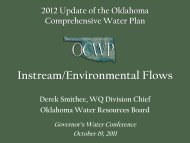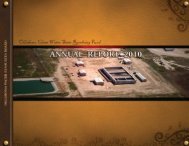Intended Use Plan for FY-2012 - Water Resources Board - State of ...
Intended Use Plan for FY-2012 - Water Resources Board - State of ...
Intended Use Plan for FY-2012 - Water Resources Board - State of ...
Create successful ePaper yourself
Turn your PDF publications into a flip-book with our unique Google optimized e-Paper software.
(Attachment-2)Guidance on Energy Efficiency Business Case <strong>for</strong> Wastewater Pumping Systems<strong>for</strong> Green Project ReserveModifications, retr<strong>of</strong>its or replacement <strong>of</strong> existing wastewater pumping systems that achieve a 20%increase in energy efficiency will categorically qualify <strong>for</strong> the Green Project Reserve (GPR)Projects that do not achieve a 20% increase in energy efficiency can also count towards the GPR ifthey have a business case showing how the project significantly improves energy efficiency.In<strong>for</strong>mation to be included in a business case <strong>for</strong> wastewater pumping stations is provided below.Business cases <strong>for</strong> wastewater pumping systems must include in<strong>for</strong>mation that demonstrates thatenergy efficiency is the primary goal <strong>of</strong> the project. They should clearly show that: 1) the mostenergy efficient equipment is being used in the project, 2) that energy efficient design andoperational considerations and practices are followed, 3) the percent increase in energy efficiencyand KWH saved, and 4) why further energy efficiency improvements cannot be achieved.1) Energy Efficient Equipment : The business case shall demonstrate that selected equipment is <strong>of</strong>the highest efficiency suitable <strong>for</strong> the project. The following are examples <strong>of</strong> standards or guidelinesto be met:• Selection <strong>of</strong> new or replacement electrical equipment should meet or exceed energy efficiencystandards set <strong>for</strong>th by pr<strong>of</strong>essional engineering and manufacturers associations such as theNational Electrical Manufacturers Association (NEMA).• If it is not possible to select new electrical equipment that can meet or exceed energy efficiencystandards then applicants must provide acceptable evidence <strong>of</strong> why this could not be achieved,with rationale <strong>for</strong> selecting alternate equipment if the goal <strong>of</strong> energy efficiency is to be achieved.2) Energy Efficient Design Practices and Considerations: The business case shall demonstrate thatall energy efficient design practices and considerations suitable <strong>for</strong> the project were used. Thefollowing are general examples <strong>of</strong> design considerations where energy efficiency could bedemonstrated:• Pumping systems should be designed to operate in their most efficient zone. Pumps should beselected to operate close to the Best Efficiency Point (BEP) on a pump curve defined as thepoint with maximum efficiency <strong>of</strong> the pump. Choose pumps that result in the lowest frictionhead loss and ensure that pumps are properly sized <strong>for</strong> the pumping system.• Pumping systems should be designed to reduce flows to be pumped where possible.• Reduce pipe friction and lower head losses to reduce the energy needed <strong>for</strong> pumping. Notethat repair and replacement <strong>of</strong> the collection system piping does not qualify as “green”except in the most dramatic infiltration/inflow cases.


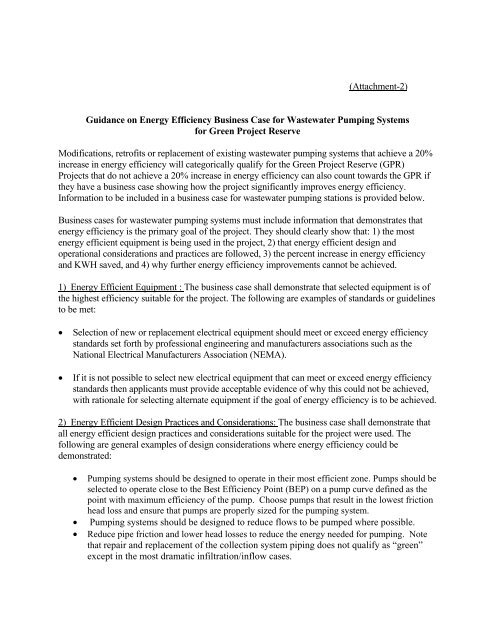


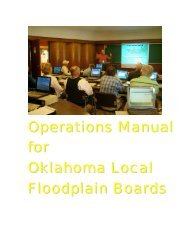
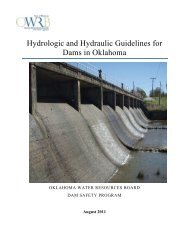


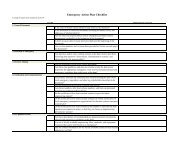



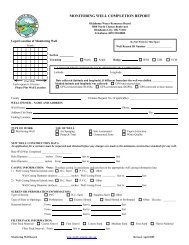
![A Commodity & a Resource [pdf] - Water Resources Board - State of ...](https://img.yumpu.com/42536671/1/190x143/a-commodity-a-resource-pdf-water-resources-board-state-of-.jpg?quality=85)
